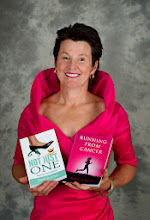The following blog on Breast Self Examination (BSE), was going along fine, until I went to my faithful Wikipedia, which surprised me to read the following:
BSE was once promoted heavily as a means of finding cancer at a more curable stage, but large randomized controlled studies found that it was not effective in preventing death, and actually caused harm through needless biopsies and surgery.
Breast awareness is an informal alternative to structured breast self-examinations.According to a meta-analysis in the Cochrane Collaboration, two large trials in Russia and Shanghai found no beneficial effects of screening by breast self-examination "but do suggest increased harm in terms of increased numbers of benign lesions identified and an increased number of biopsies performed." They concluded, "At present, screening by breast self-examination or physical examination cannot be recommended."[1]
Although breast self-examination increases the number of biopsies performed on women, and thus revenue for the breast cancer industry, it does not reduce mortality from breast cancer. In a large clinical trial involving more than 260,000 female Chinese factory workers, half were carefully taught by nurses at their factories to perform monthly breast self-exam, and the other half were not. The women taught self-exam detected more benign (normal or harmless lumps) or early-stage breast disease, but equal numbers of women died from breast cancer in each group.[2]
(to read more go to :http://en.wikipedia.org/wiki/Breast_self-examination )
I only know that in my case, a self discovered lump in my left breast was reason enough to be sent for more tests which resulted in finding a cancerous lump in the right breast that was never felt by self-examination. My girlfriend, a doctor who has female clinics, strongly suggests that women self examine. I still perform BSE monthly.If you want to know more about it, keep reading:
- In 2010, an estimated 23,200 women in Canada will be diagnosed with breast cancer, an increase of (500) from 2009. On average, 445 Canadian women will be diagnosed with breast cancer every week.
- Estimated number of new cases of breast cancer in females by age:
- 6,600 breast cancer cases diagnosed in women 70+
- 5, 800 breast cancer cases diagnosed in women 60-69
- 6,200 breast cancer cases diagnosed in women 50-59
- 3, 500 breast cancer cases diagnosed in women 40-49
- 950 breast cancer cases diagnosed in women under the age of 40
If breast cancer is found at an early stage there is usually a better chance of successful treatment. Finding cancer early may also allow for more treatment options such as less aggressive treatment or breast conserving surgery.
Breast screening is the regular examination of a woman’s breasts to detect breast cancer when she has no signs or symptoms of breast problems.
Two common methods of breast screening are:
Although not a screening method, something you can do on your own is to be breast aware. Being breast aware means knowing how your breasts normally look and feel. That way, if there are any significant changes, you'll be more likely to notice them and can have them checked by a doctor.
Breast screening is the regular examination of a woman’s breasts to detect breast cancer when she has no signs or symptoms of breast problems.
Two common methods of breast screening are:
Although not a screening method, something you can do on your own is to be breast aware. Being breast aware means knowing how your breasts normally look and feel. That way, if there are any significant changes, you'll be more likely to notice them and can have them checked by a doctor.
Still, it is possible for breast cancer to develop without any changes that can be easily noticed, which is why breast screening with mammograms or other methods are so important.
The most common symptom of breast cancer is a new lump or mass. A mass that is painless, hard, and has irregular edges is more likely to be cancerous, but breast cancers can be tender, soft, or rounded. They can even be painful. For this reason, it is important that any new mass, lump, or breast change is checked by a health care professional with experience in diagnosing breast diseases.
Other possible signs of breast cancer include:
Lump. A lump or hard knot in the breast or armpit
Lumpy area. Bumpiness or unusual thickening that doesn’t go away after your period
Pain.Pain in one spot that’s not associated with your period
Swelling. Swelling, warmth, redness or darkening
Size and shape. One breast might become larger or lower than the other
Skin texture. Puckering or dimpling of the skin
Appearance or direction of nipple. One nipple might become inverted (turned in)
Discharge. Nipple excretes a blood-stained liquid (in one or both breasts)
Rash or crusting. An itchy sore or scaling area on or around the nipple
Sometimes a breast cancer can spread to lymph nodes under the arm or around the collar bone and cause a lump or swelling there, even before the original tumor in the breast tissue is large enough to be felt. Swollen lymph nodes should be reported to your doctor.
Unusual lumps found in the breasts often turn out to be cysts or fat necrosis, which are no threat to your health. But remember, it’s important to talk to your doctor if you notice anything unusual .It could save your life.
For more information on how to self examine your breasts, watch this quick, very informative video at:
If you're interested in getting a monthly reminder to self-examine, go to this site:
To BSE or not, it's up to you. The more aware we are of our bodies, the better, when it comes to our health.


No comments:
Post a Comment